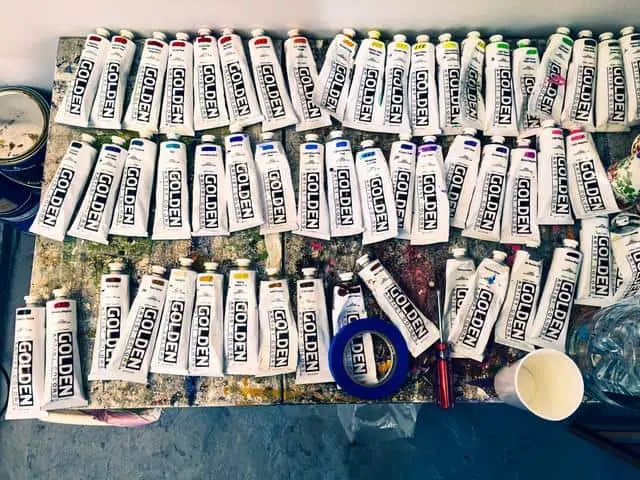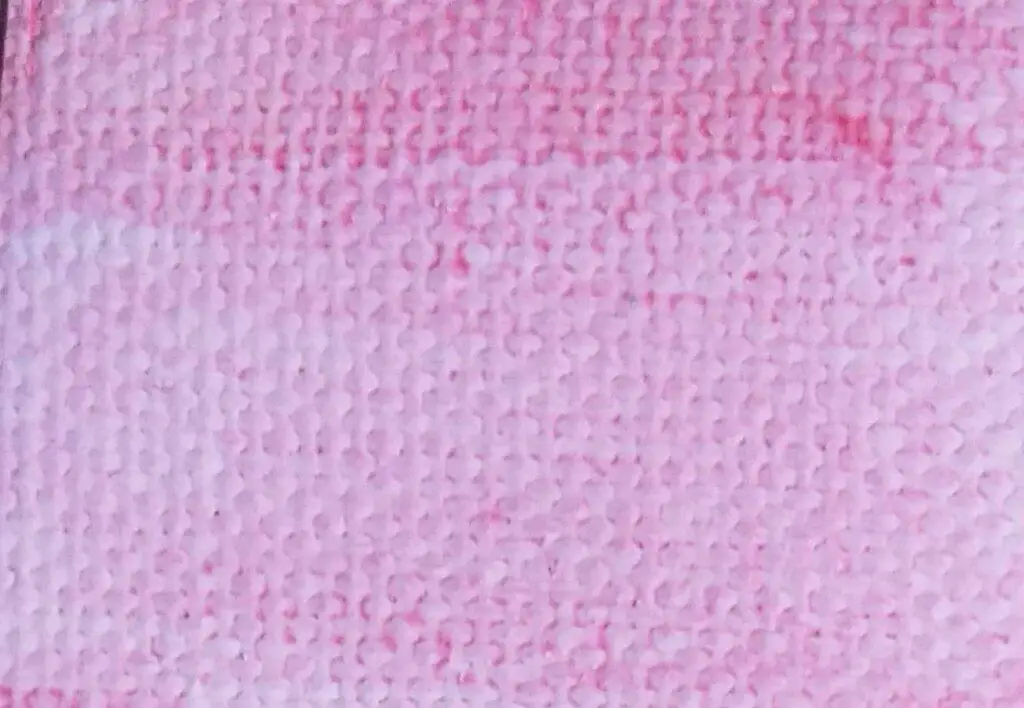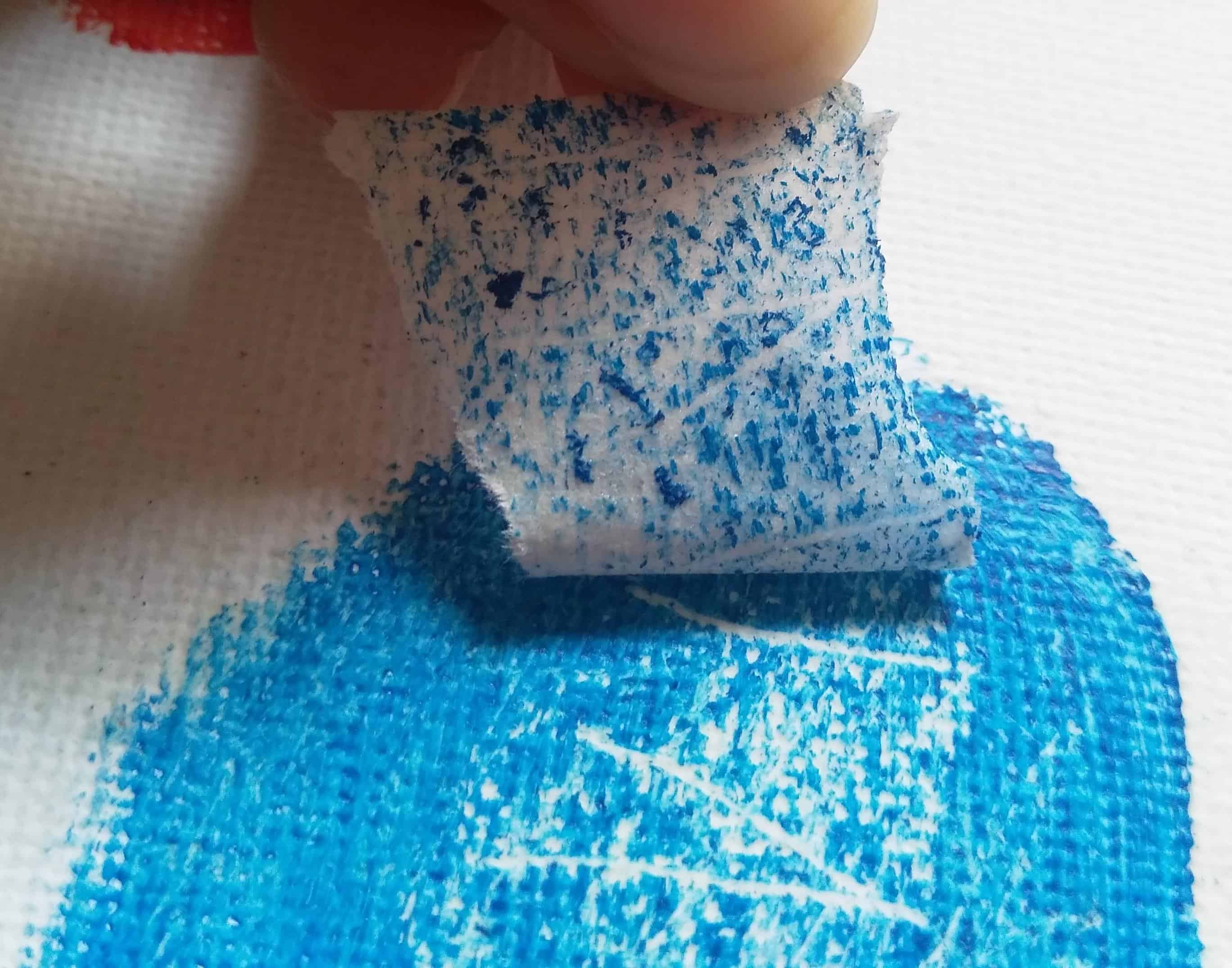If you have stumbled upon this article you might have experienced acrylic paint lifting. I have faced this problem several times ever since I started using my new canvases. Anyway, many factors go into the question ‘why does acrylic paint lift?’
In general, acrylic paint lifts when paint cannot grab onto the surface it is painted on properly. When this happened consider the painting surface, primer, paint, and painting technique you are using. When all these factors are optimal, acrylic paint will not lift from the surface.
Now you might be thinking, what am I going to do with the painting surface, primer, paint, and the painting technique that I use? It will be discussed in detail in this article including the opinions of fellow acrylic artists.
What is acrylic paint lifting and why?
Acrylic paint lifting or paint coming off happens when you try to put down a new paint layer on top of the previous paint layer, both the previous and the new paint layer start to lift off the surface. You will see that paint has poor adhesion to the surface it is painted on.
You might think that this is the same as acrylic paint not sticking to the canvas. Yes, these terms are interchangeable. But if you’re interested in the topic of acrylic paint not sticking to the canvas, you can read the article I have written about it.
Many factors go into acrylic paint lifting from a canvas or any other surface. For ease of understanding, I have categorized them into four sections as below.
- Problems with the painting surface
- Problems with the primer
- Problems with the paint
- Problems with the painting technique
Those are the 4 things you need to look into when you are first faced with acrylic paint lifting. I will be discussing each of these sections in detail below.
Problems with the painting surface
When you have first faced acrylic paint lifting, consider the surface you are painting on. In most cases, people struggle with acrylic paint lifting when they are painting on smooth, non-porous materials that are not well suited for acrylic painting.
In this case, you need to prepare that rigid surface well by sanding and priming. Even if the surface you are painting is a canvas which is the most used for acrylic painting, preparation is the key.
How to fix…
Sanding provides teeth or texture for a primer-like gesso to stick to a rigid nonporous surface. If you don’t like to sand the surface you can use a sandblaster or acid etch the surface, especially for glasses.
Gesso is the perfect primer for acrylic paint. Acrylic paint can grab onto gesso on the surface well, and not lift. You can also use a primer especially made for surfaces like metal or plastic.
One of the best primers that are suitable for most surfaces is KILZ Adhesion Primer (links to Amazon). Prime the surface with this and continue creating your beautiful artwork on top of the primer. Take necessary precautions as you apply the primer as per the manufacturer.
Other than a regular primer, you can use an adhesive material called shellac. Shellac is used in many paints and even inks. It is a good adhesive for acrylic paint. It can increase the bond between acrylic paint and the surface.
If you want to know the exact process of preparing and painting on a rigid nonporous surface without acrylic paint lifting, I have written several articles on how to stick acrylic paint on metal, stick acrylic paint on glass, and stick acrylic paint on acrylic. You can find the step-by-step process of sticking acrylic paint on each surface in the article along with a video guide.

If you are using a canvas make sure it is primed with gesso. Even if it is pre-primed, adding one or two coats of gesso helps with acrylic paint lifting and sticking to the canvas. Some artists use to mist their gesso primed canvases before painting. This also helps with better paint adhesion.
What to look for…
There are some things acrylic paint cannot form better bonds with. Some of them are oil, grease, and wax. You need to look for these on the surface. Generally, grease can come to the painting surface by our fingers, when we touch the painting surface.
To avoid it you can clean with soap and water and wipe your hands before a painting session. However, the best solution would be wearing gloves when painting (I know most of you might not like it unless you are an acrylic pour artist).
If you purchase a pre-primed canvas that has a damaged cover or is not covered at all, there is a good chance acrylic paint lifts on this canvas due to dirt, grease, and oil that have the potential to be there.
I have also written an article about what acrylic paint will not stick to. You will know what to avoid when it comes to sticking acrylic paint.
So if you happen to see any grease, wax, or oil on the painting surface you can clean it with mild soap and water or a little acetone. Then let the surface dry thoroughly. It is very important that you completely dry the painting surface before putting on any paint.
Moisture is an important factor you need to understand. Moisture can weaken the paint bonds with the surface or paint itself. Therefore make sure you paint on a dry surface and do not stress the paint film too much when the paint is still wet beacuse it can lift the paint.
Another option you have is reapplying gesso on the painting surface. This is one of the best choices you can opt for.
Problems with the primer
Now you might have primed the surface with gesso or a primer specific to the surface. But you may still see acrylic paint lifting. In this case, it is a good time to consider the primer you are using. I am targeting this section mainly for gesso as it is the primer most of us artists use on canvas or other material.
One of the reasons for acrylic paint lifting is poor quality gesso. Gesso is made up of white pigment (titanium white), a material that provides ‘tooth’ (chalk/ calcium carbonate) and binder (usually acrylic polymer binder). A good gesso has a perfect balance of these components.
A bad gesso primer would have less binder, white pigment, and even less calcium carbonate. They can be watered down too much. I have experience with one of these bad gesso. It is opaque and white just see it, but when applied it is very translucent and does not provide any ‘tooth’, and is very smooth.
Avoid these kinds of gesso. You can buy gesso from renowned acrylic brands such as Liquitex, Golden, and Winsor & Newton acrylic paint. These are the brands I would recommend to anyone. Their student-grade paint and primers are generally cheaper.
If you want an in detail explanation of the reasons and best fixes for acrylic paint peeling (peeling happens over time generally and is quite similar to paint lifting) you can read the article I have written,
Acrylic Paint Peeling: Common Reasons and Best Fixes.
Problems with the paint
Now that you have solved problems with gesso, let’s see what can go wrong with your paint. There can be a lot going wrong with craft-quality paint. If you are using craft quality paint I recommend you to use a good quality student-grade acrylic paint brand like Liquitex or an artist-grade acrylic paint like Liquitex, Golden, or Winsor & Newton acrylic paint.

Craft quality paints have poor adhesion due to their composition. That can cause acrylic paint to lift. Craft paints may not adhere well to a primed surface or the paint layer under it. Other than acrylic paint lifting, craft quality paints have less vibrant colors and mix muddy colors most of the time.
Good quality paints are always a game-changer!
One of my students was using Artist’s Loft acrylic paints and had a lot of trouble with acrylic paint lifting. I had her use my Grumbacher acrylic paints and it solved the problem. I’ve never had trouble unless I’m using poor-quality paint. Golden and Liquitex are of good quality, too. In painting, I have found that you get what you pay for.
Brigitte M. Miller on Facebook
Problems with the painting technique
Other than the above factors I have discussed, your painting technique and what you do with your paints have a big impact on acrylic paint lifting.
Acrylic paint lifting is most common to happen on wet paint. Remember I told you that moisture is one of the main factors that contribute to acrylic paint lifting? Wet paint means the paint has not formed a stable bond with the surface of the paint layer underneath it yet. So it can be easily lifted.
Let the paint dry for 20 minutes to a few hours
Usually, wet paints are tacky. Even when the paint is dry to the touch, it can still be wet underneath, especially if the paint layer is thick. To prevent acrylic paint from lifting with tacky paints, you can re-dampen it with a spray bottle or let the tacky paints dry fully.
Usually, 20 minutes is enough for the paint to dry, to the level it does not lift. This is most accurate for good-quality paints. But if you use some low-quality paint allow it to dry for a few hours and work on it again. After the previous paint layers are dry thoroughly you can work on adding more acrylic paint layers.
This way you will not lift acrylic paint off. If you are going for vigorous paint application, then you need to let the previous paint layers dry for a few hours or maybe overnight.
Make sure you do not overwork your paints
Sometimes when you are overworking wet paint with your brush or any other paint applicator when the previous layers are not dry or in the middle of drying, the acrylic paint can lift.
This can happen if you mist the colors on the canvas that is half dry with a water mister to keep the paint wet, especially while blending colors. This will easily lift off the paint. Only water mist the canvas before painting but not after the paint is on the canvas.
One time I applied the first coat of paint and after 20 minutes I applied another paint layer on top quite vigorously with a painting sponge. This lifted the paint layer underneath and left some patches on the canvas.
So make sure you do not rub wet paint with a brush or any other applicator. Because the wet paint can reactivate the dry-to-touch or tacky paint layer underneath and lift that paint layer too.
If it wasn’t for a technique like applying paint with a sponge, you may overwork your brush strokes when you are not confident. This can lift acrylic paint. So, Lay your color on confidently, and don’t mess with it until it’s dry.
Until the paint dries you can move on to a different painting or just walk away for some time. You can also brush very lightly to just put paint on and/or smooth it out and then leave it to dry longer.
Speed up the drying process
Now that you know paint drying completely is important for not lifting acrylic paint or preventing acrylic paint from coming off the surface, let’s see how we can speed up the drying process.
You can use a hair dryer to speed up the drying process between the layers. Some artists use this method and have not experienced any ill effects of it. So use a hair dryer in a cool setting. It is important that you set it to a cool setting because high heat retard acrylic film formation.
Also, the rapid airflow of the hair dryer will move the air with moisture near the paint away and allow the moisture in the paint to come off quickly. This helps the paint to dry quickly without any ill effects. Now you can work on building more layers without any lifting.
Use acrylic mediums to thin paint
Some have experienced acrylic paint lifting when the paint is thinned too much. But the majority of artists I have seen have no problem with thinning acrylic paint even up to 80 – 90%. However, the recommended amount of water to add to acrylic paint is 30% maximum.

So if you have tried all the above methods and non of them works or you think they do not suit you, you can use acrylic mediums to thin the paint like a matte, gloss, or gel medium. These can increase the adhesion of the surface.
The type of acrylic medium to use depend on the effect you want with acrylic paint. You can even make custom mixers of your own.
Acrylic mediums can open up the acrylic paint horizons for you. It will help you to create different effects which otherwise are impossible to create with paint. So I recommend you try acrylic mediums from a good quality paint brand.
I also have been playing with different mediums. Some give the paint a glossy sheen… some make the paint dry slower… like oil paint. They are fun!
If you generally use thin paint layers you can get soft body acrylic paint from a good acrylic paint brand like Golden, Liquitex, or Winsor & Newton acrylics. You can check them out on Blick Art Materials online store.
Lifting acrylic paint: a true technique
Now you might think acrylic paint lifting is all bad. It is of course if paint lifting happens unintentionally. But there is a true and known technique of acrylic paint lifting. It is most popular among oil painting artists as oil paints are very easy to lift when wet.
However, you can do this technique with acrylic paint as well. I have found a good video demonstration of acrylic paint lifting for abstract art. You can watch it with this link.
Conclusion
Acrylic paint lifting can be frustrating when you don’t know why it happens. But it happens most commonly when you paint on a not fully dried paint, using craft or low-quality paint, using a primer that provides poor adhesion, not preparing the painting surface well, and thinning acrylic paint too much.
Hope you found what is causing acrylic paint lifting for you.

